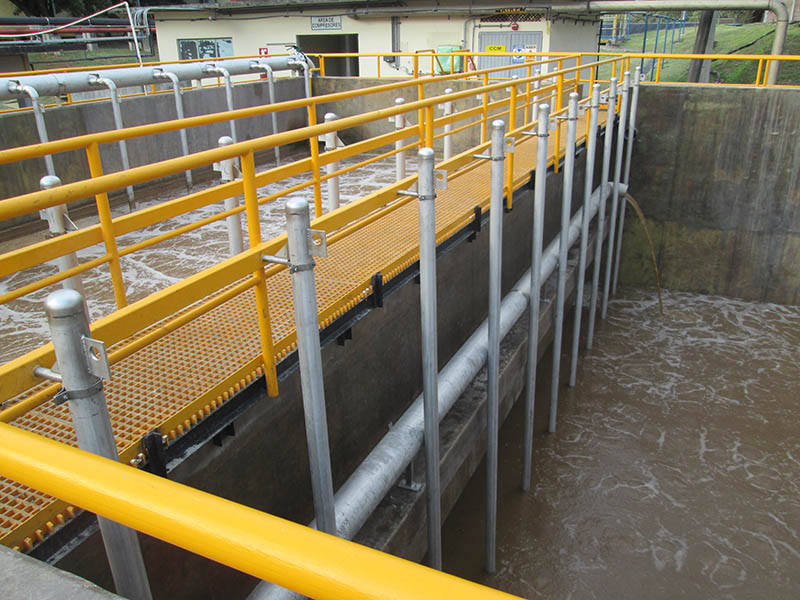Water treatment systems
1. Description: Lapsolite wastewater treatment plants (WWTP), are used to treat sewage with an organic load and high chemical load prior to its final disposal. This type of water comes from different types of industry, shops, residential areas, etc.
A sewage treatment process is commonly organized as follows:
- Grit chamber.
- Aeration tank (Bioreactor).
- Sedimentation.
- Sludge treatment.
- Filtration.
- Chemical treatment.
2. Ranges of design: to correctly decide the dimensions for a WWTP it is important to know the following:
- Residual water flow to be treated.
- The flow rate of water to be treated.
- Organic input load and solids.
- Chemical input load.
- Total suspended solids (TSS).
The types of treatment to be selected among several options depends on the characteristic of the effluent to be treated such as neutralization, sedimentation, aerobic and anaerobic treatment of sludge, biological treatments, etc.
3. Applications: Industrial plants (metallurgical, chemical, petrochemical, pharmaceutical, etc.) shopping centers, hospitals and residential areas.
4. Benefits:
a. Elimination of pollutants prior to the liberation of the liquid flow.
b. Elimination of odors.
c. Volume of water available for non-domestic use.

 ENGLISH
ENGLISH



